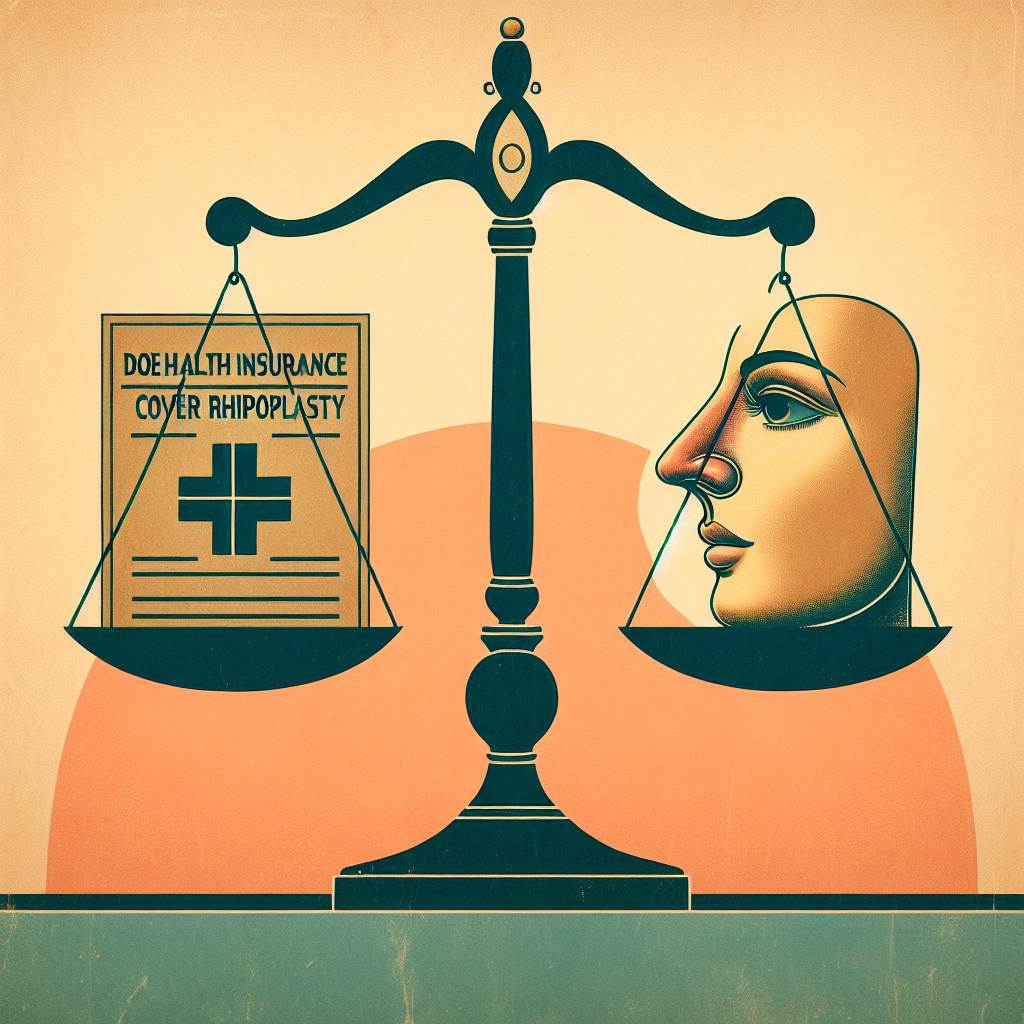Filed under Health Insurance on
Understanding Rhinoplasty Coverage in Health Insurance

Understanding the intricacies of health insurance coverage can sometimes feel like navigating a labyrinth, especially when it comes to specific medical procedures like rhinoplasty. Many find themselves asking: Does health insurance cover rhinoplasty? The answer to this question isn't a simple yes or no because it largely depends on the reason behind the surgery. In this article, we'll delve into what rhinoplasty is, the types of rhinoplasty, and how health insurance typically covers this type of surgery. We'll also address common questions and give practical examples to help clarify this often-confusing topic.
What is Rhinoplasty?
Rhinoplasty, commonly referred to as a "nose job," is a surgical procedure that reshapes the nose. This procedure can be for cosmetic reasons—to improve the appearance of the nose—or for medical reasons, such as correcting breathing issues. Rhinoplasty can alter the nose's shape, size, and overall appearance, or it can correct structural defects that impair function.
Types of Rhinoplasty
1. Cosmetic Rhinoplasty
Cosmetic rhinoplasty is performed to enhance the outward appearance of the nose. It is commonly requested by individuals who are unhappy with their nose size, shape, or overall look in relation to their facial features. Aesthetic changes can include the straightening of a crooked nose, smoothing a bump on the bridge, or refining the nose tip.
2. Functional Rhinoplasty
Functional rhinoplasty is conducted for medical reasons, primarily to improve breathing. This type of surgery can address structural issues such as a deviated septum or other nasal obstructions that impede normal airflow. A person might seek functional rhinoplasty after experiencing chronic breathing difficulties, sleep disorders like sleep apnea, or sinus infections.
Health Insurance Coverage for Rhinoplasty
1. Cosmetic vs. Medical Necessity
Health insurance companies generally distinguish between procedures done purely for cosmetic reasons and those deemed medically necessary. Cosmetic surgeries, including cosmetic rhinoplasty, are often not covered by insurance because they do not directly impact one’s health. On the other hand, if rhinoplasty is deemed medically necessary, coverage is more likely.
2. When is Rhinoplasty Covered?
Insurance typically covers rhinoplasty when it is performed to correct or improve a functional impairment. For example, if you have a deviated septum that causes breathing difficulties, your insurance might cover a portion or all of the rhinoplasty costs to correct this issue. However, specific conditions must be met, including medical evaluations and documentation that prove medical necessity.
Steps to Ensure Insurance Coverage
Navigating insurance coverage for rhinoplasty requires planning and detailed documentation. Here are steps to help increase the likelihood of obtaining coverage:
- Consult with an Experienced Surgeon: Choose a board-certified surgeon who frequently handles cases involving insurance claims. Their experience can be invaluable in understanding what documentation is needed.
- Obtain Detailed Medical Documentation: Gather comprehensive medical records that highlight the necessity of the procedure. This can include physician notes, diagnoses of breathing difficulties, and assessments indicating structural abnormalities.
- Pre-Authorization: Before scheduling surgery, ensure that you go through the pre-authorization process with your insurer. Pre-authorization is an agreement by your insurer about the medical necessity of a procedure.
- Understand Your Policy: Review your health insurance policy to understand what is covered and any prerequisites or restrictions that could affect your claim.
- Consider an Appeal: If your initial claim is denied, be prepared to file an appeal. Work closely with your surgeon and insurance provider to provide additional information required to support your case.
Real-Life Example
Consider Sarah, a 30-year-old woman with a significant deviated septum causing chronic sinus infections and severe breathing problems. When Sarah consulted with an ENT specialist, they recommended functional rhinoplasty to correct her nasal passage. By thoroughly documenting the impact on her health and coordinating with her insurer for pre-authorization, Sarah's procedure was deemed medically necessary and thus covered by her health insurance. Although Sarah initially faced a denial for a portion of the procedure deemed cosmetic, her detailed medical records strengthened her appeal, leading to comprehensive coverage.
Practical Advice
If you're considering rhinoplasty, clear communication with your healthcare provider and insurer is key. Here’s some practical advice:
- Keep organized records of all medical evaluations and communications with medical practitioners.
- Be proactive in consulting with your insurance provider about potential coverage for rhinoplasty.
- Don't hesitate to seek a second opinion if necessary, to further substantiate your medical need for the procedure.
FAQs about Rhinoplasty and Health Insurance Coverage
1. Can rhinoplasty be covered by health insurance?
Yes, but typically only if it is deemed medically necessary. Cosmetic rhinoplasty, aimed at improving appearance without a functional need, generally isn't covered by insurance.
2. How can I prove that my rhinoplasty is medically necessary?
You need to provide comprehensive documentation from your physician, including diagnosis of a functional problem (e.g., deviated septum) and medical advice stating surgery as a necessary solution.
3. What should I do if my claim for rhinoplasty is denied?
If your claim is denied, review the denial letter for specific reasons, gather any additional documentation needed, and file an appeal with your insurance company, providing strong justification for the necessity of the procedure.
4. Does having a birth defect make rhinoplasty automatically covered by insurance?
A congenital defect can increase the likelihood of coverage, particularly if it impacts function. However, documentation proving medical necessity will still be needed for insurance approval.
5. Is a pre-authorization guarantee that my insurance will cover rhinoplasty costs?
Pre-authorization increases the chances of coverage but isn't a guarantee. Ongoing communication with your healthcare provider and insurance company is crucial for understanding the scope of coverage and any out-of-pocket costs you might incur.





